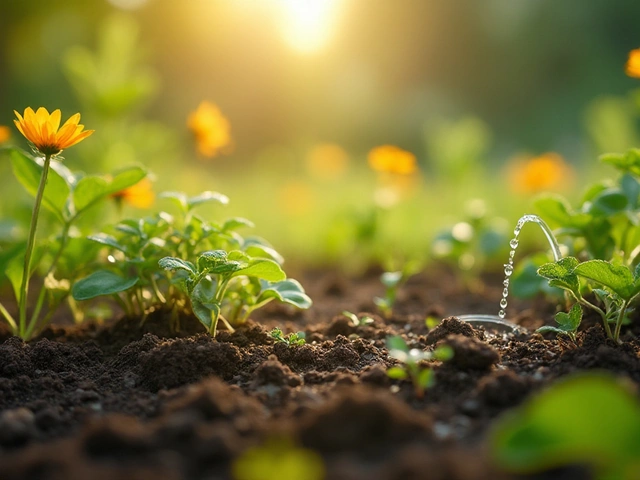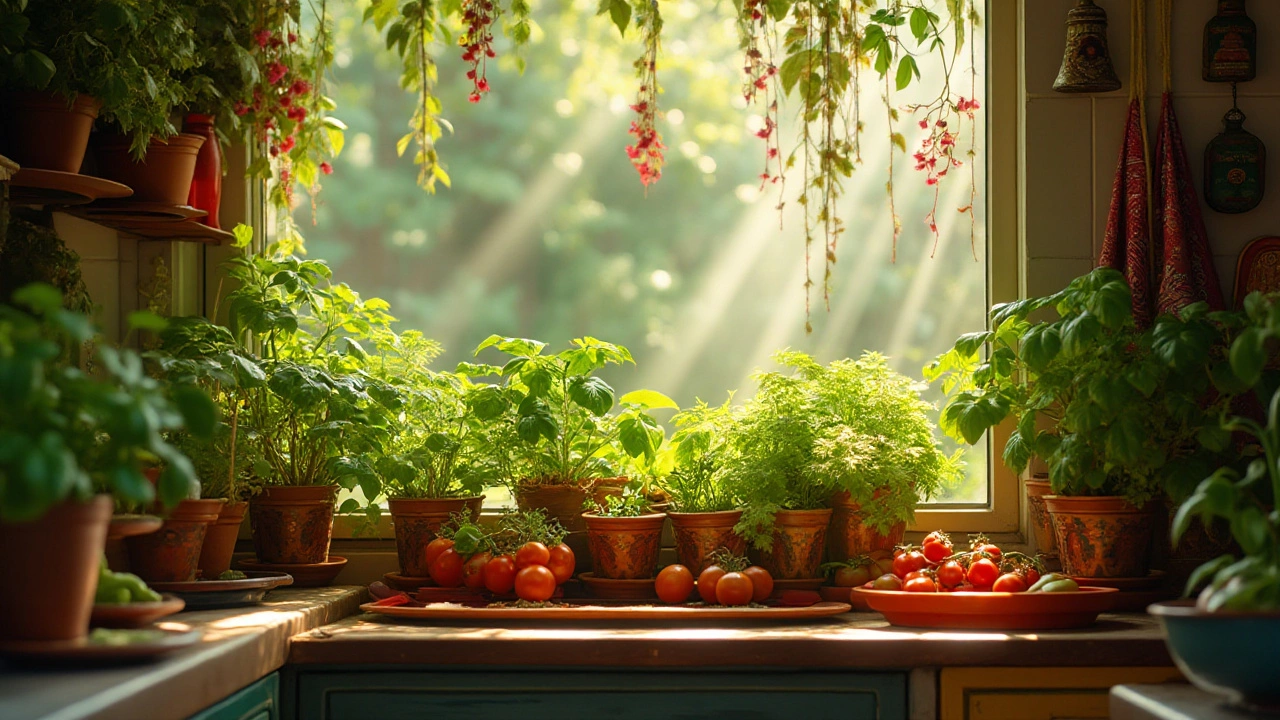Indoor Vegetable Growing: Simple Tips for Fresh Veggies at Home
Want salad greens, herbs, or even a tiny tomato plant without a backyard? Growing vegetables indoors works for apartments, balconies, or any sunny corner. The key is matching the plant’s needs to the space you have, then keeping a regular routine. You don’t need fancy equipment—just a few containers, good light, and the right soil. Follow these basics and you’ll harvest fresh veggies year round.
Choosing the Right Containers and Soil
Start with containers that have drainage holes; excess water must escape to avoid root rot. Plastic pots are cheap and lightweight, but clay pots let the soil breathe better. For leafy greens, a 5‑liter pot is enough, while dwarf tomato varieties need at least 10 liters. Fill the pot with a light, well‑draining mix – a blend of garden soil, compost, and perlite works well. Avoid heavy garden soil alone; it stays soggy and slows root growth.
Light, Water, and Nutrient Basics
Most vegetables crave 6‑8 hours of bright light daily. A south‑facing window often supplies that, but a simple LED grow light can fill gaps on cloudy days or winter months. Keep the light about 12‑18 inches above the foliage and raise it as the plants grow. Water when the top inch of soil feels dry – push a finger in, and if it’s dry, it’s time to water. Don’t drown the plant; a quick pour until water drains out is enough.
Feed your indoor garden every two weeks with a balanced liquid fertilizer (10‑10‑10) diluted to half strength. That supplies the nitrogen, phosphorus, and potassium veggies need for leaf growth, root development, and fruit set. Watch for yellow leaves (sign of nitrogen shortage) or stunted stems (possible phosphorus issue) and adjust feeding accordingly.
Temperatures between 65°F and 75°F suit most vegetables. If your room gets chilly at night, move the pots to a warmer spot or use a small heater on low. Conversely, keep plants away from hot radiators or drafty windows that can stress them.
Now that you have the basics covered, here are a few fast‑growing choices that prove indoor veg is doable:
- Leafy greens – spinach, lettuce, and arugula sprout in 3‑4 weeks and need only shallow containers.
- Herbs – basil, cilantro, and mint thrive in small pots and love the humidity of a kitchen.
- Root veg – baby carrots and radishes grow well in deeper trays with loose soil.
- Dwarf fruiting varieties – cherry tomatoes, peppers, and bush beans can fruit in 8‑10 weeks with enough light.
Watch for pests like aphids or spider mites; a quick spray of diluted neem oil keeps them in check without harming the plant. Rotate your pots every few days so all sides get equal light, and prune dead leaves to improve airflow.
With the right containers, proper light, and a regular watering‑feeding schedule, indoor vegetable growing becomes a hassle‑free way to add nutrition and flavor to your meals. Try a mix of greens and a dwarf tomato this month—you’ll be surprised how quickly you can enjoy home‑grown produce, even in a tiny apartment.
Grow Fresh Vegetables in Your Kitchen: A Complete Guide
Explore the world of kitchen gardening and bring nature into your home by growing vegetables right in your kitchen. This complete guide covers everything you need to know for successful indoor vegetable gardening, from selecting the right plants to creating a perfect growing environment. Discover creative space-saving solutions and learn how to enjoy a continuous supply of fresh produce. With practical tips and interesting facts, even beginners can start their own indoor garden with confidence.
About
Home and Garden
Latest Posts


Evaluating the Benefits and Costs of Drip Irrigation Kits
By Alden Thorne Feb 2, 2025

Can I Just Put Perlite on Top of Soil? Here's What You Need to Know
By Alden Thorne Mar 11, 2025

Sister Plants: The Science and Benefits of Companion Planting for Gardeners
By Alden Thorne Jul 19, 2025

